Spectrum Incandescent Bulbs

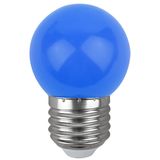

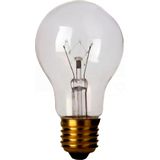



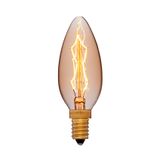
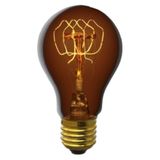
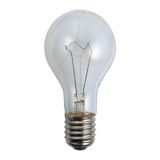
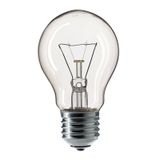
spectrum incandescent bulbs where they still earn a place
Projects still specify these for dim-to-warm ambience, zero driver risk, and true continuous dimming. Installers get 220–240 V mains operation, standard caps (E27/E14, occasional B22), and envelopes from A60 and G45 to ST64 and G95 globes. In practice they sit in front-of-house bars, boutique windows, listed buildings, and appliance niches where electronics fail early or look out of place.
spectrum classic light bulbs portfolio and formats
Expect clear, frosted, and tinted glass with straight or coiled tungsten filaments; rough-service and appliance variants use reinforced supports. Power nodes typically 15/25/40/60/75/100 W; lumen output roughly 120–1 100 lm across that span. Decorative bodies (ST, globe) come with long necks for shades; sign and tubular forms handle tight coves and picture lights. Stock E27/E14 across the board and keep a small set of oven/fridge sockets for specialty SKUs.
spectrum filament lamps engineering numbers that matter
Colour: ≈2700 K at full load with CRI ≈100; warms further on dimming. Power factor: ~1.0 (purely resistive). Ripple: none—no driver, so camera banding isn’t an issue. Lifetime: 1 000–2 000 h depending on type; appliance and rough-service variants are on the higher side. Switching: cold filament inrush is 8–12× In for milliseconds—large banks should avoid B-curve MCBs or use staggered switching. Operating window: typically −20…+40 °C ambient; oven lamps run much hotter by design (glass, cement, and lead design rated accordingly). Typical IP at the lampholder is IP20; moisture zones require the luminaire to provide the IP rating, not the lamp.
Technical standards and compliance cues
Household types follow IEC 60064 (tungsten filament) and safety parts of IEC 60432-1; lampholder interfaces per IEC 60061; luminaires hosting them fall under EN/IEC 60598-1. Where local efficiency rules limit general service lamps, specify decorative, appliance, signal, or “special purpose” product families as permitted. Mark voltage/wattage/maximum envelope temperature on drawings near enclosed shades.
spectrum decorative incandescent lights deployment playbook
Front-of-house: tint and spiral filaments deliver warm foregrounds for bars and cafés; run on trailing-edge dimmers to extend life and keep acoustic noise down. Heritage interiors: exposed lamps under brass shades look right and avoid driver flicker on vintage switches. Retail windows: high centre-beam intensity through clear glass adds sparkle—but protect from drafts that snap hot filaments. Appliances: oven and refrigeration lamps tolerate vibration and temperature cycling; always match cap, wattage, and temperature rating to the OEM note.
Compatibility and wiring practice for site teams
These are forgiving on control gear—standard phase-cut dimmers work across the range—but respect total load per channel and inrush on “all-on” scenes. Neutral sharing is straightforward with resistive loads; nuisance trips are more about grouped cold starts than leakage. Use heat-rated lampholders (T180+ where shades trap air), and keep cable insulation away from glass envelopes in small shades.
Integration with other Spectrum families
Mixing typologies is common: decorative lines on incandescent, task zones on LED retrofit, and back-of-house on linear gear. Spectrum fixtures with E27/E14 sockets accept these directly; where you need long life but the same look, park a compatible LED filament SKU in the same holder and hold both on the schedule. For linear coves, pair with the brand’s fluorescent or LED channel bodies while keeping dim, warm accents on separate circuits.
Selection criteria for B2B buyers and planners
- Photometric intent: point-source sparkle or diffuse fill? Clear glass for sparkle, frosted/tinted for soft backgrounds.
- Thermal headroom: closed shades need T-rated holders and wattage caps; add spacer rings where trim edges brown.
- Dimming narrative: trailing-edge preferred; set minimum level to curb inrush and extend life.
- Logistics: standardise on E27 for public rooms and E14 for bedside and sconces; hold one tinted and one clear finish per area to simplify spares.
- Regulation fit: confirm whether the lot sits under decorative/appliance categories where efficiency rules are tight.
Procurement notes, labelling, and service
Cartons should be shock-resistant with inner dividers; keep a 3–5% overage for glass breakage during late-stage works. Print lamp cap, watt limit per shade, and dimmer channel on the room data sheet so crews don’t guess. Where specs still call them spectrum household incandescent lamps, lock E-codes and envelope shapes per room type to avoid ad-hoc substitutions.
Bankoflamps support for Spectrum packages
You work with a named account manager who maps caps, watt limits, envelope shapes, dimmer channels, holder temperature classes, and spares to each room schedule. The portal shows live EU stock by warehouse; quotations land in about an hour with EAN/MPN, lumen/watt tables, envelope dimensions, and holder notes. Orders go in by manufacturer code; downloadable price lists carry validity windows so budgets hold through phases. We track lead times and shipment legs, consolidate by site and zone to cut off-loading time, and provide purchase-history analytics. Approved accounts can operate with post-payment up to 30 days across France, the Baltics, Germany, Spain, Italy, Belgium, and the Netherlands.